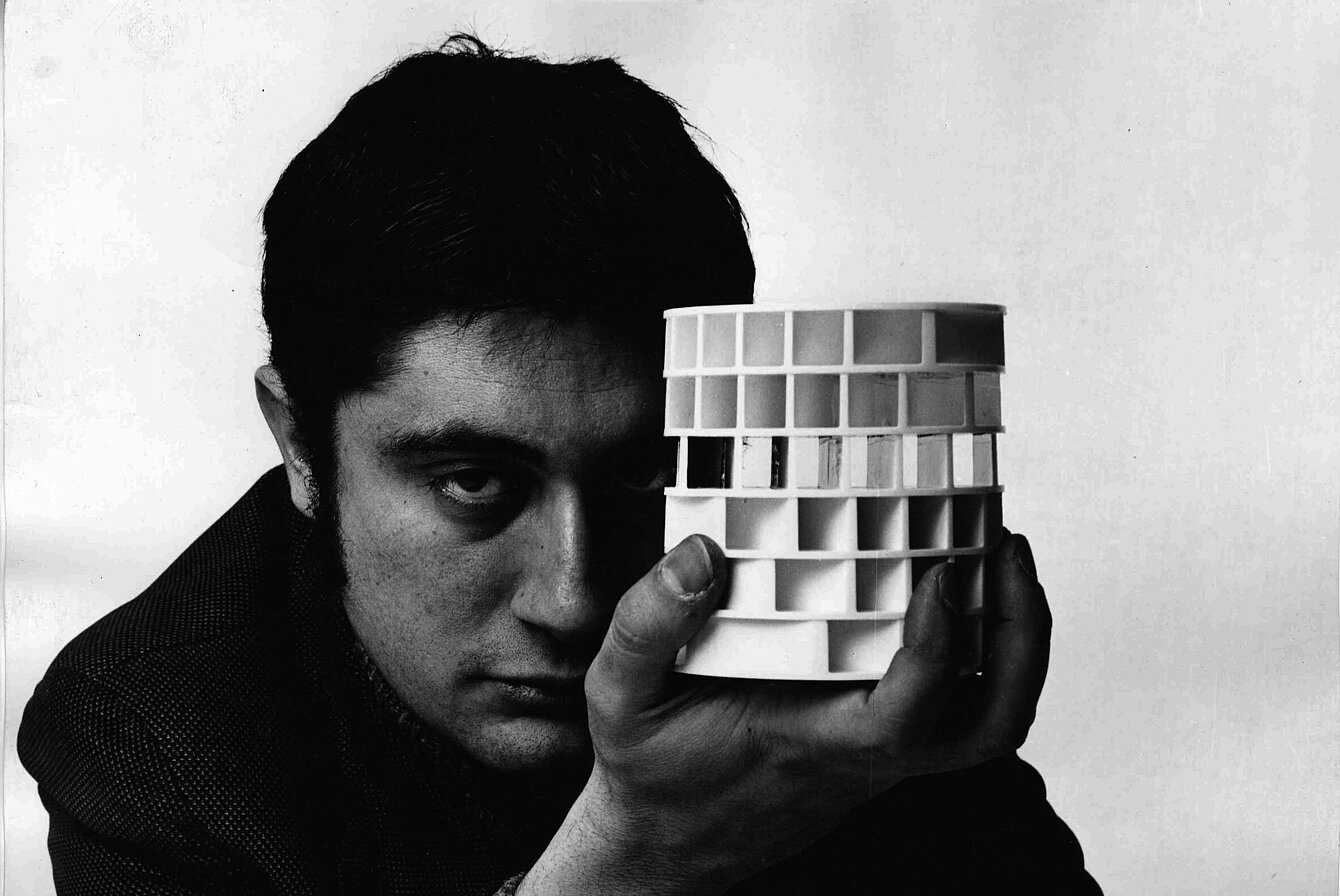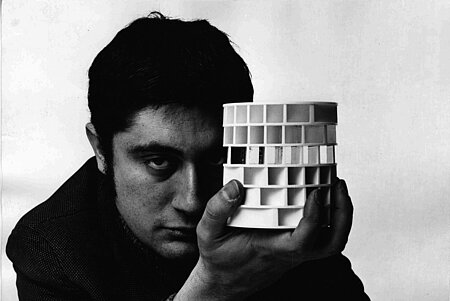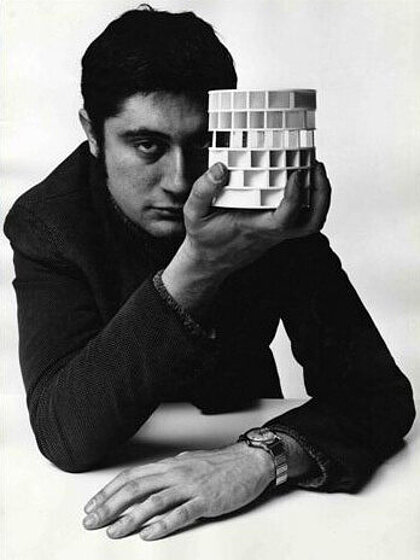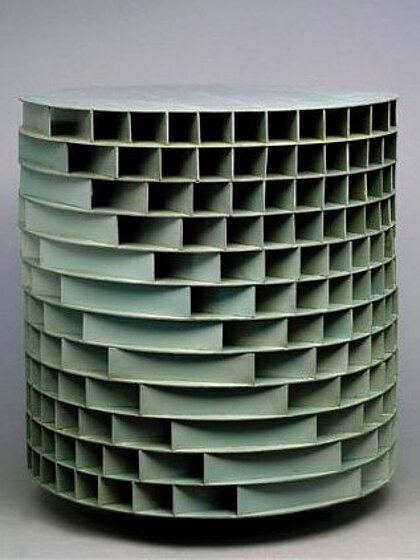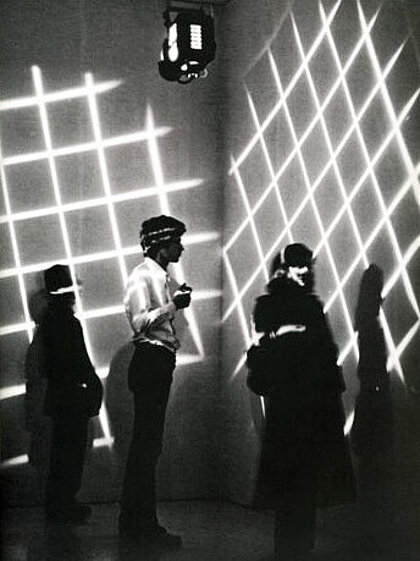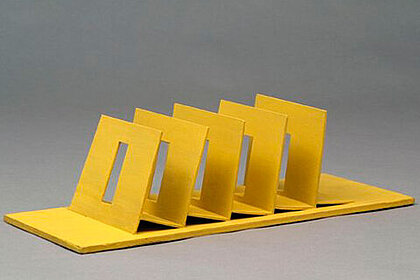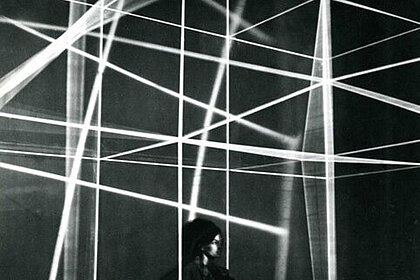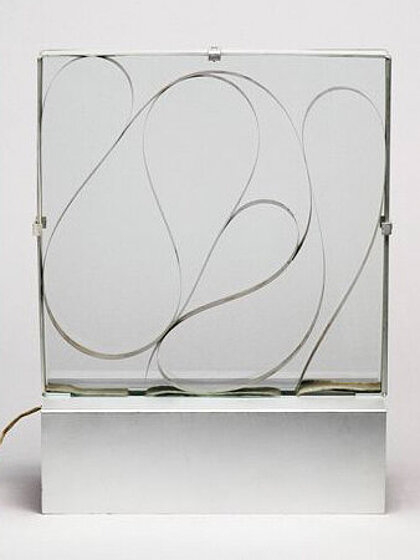Gianni Colombo was born in Milan on January 1, 1937. From 1956 to 1959 he studied at the Accademia di Belle Arti di Brera in Milan. In 1959 he exhibited cotton-wool works at Galleria Azimut in Milan run by Piero Manzoni and Enrico Castellani. In the same year, together with Giovanni Anceschi, Davide Boriani and Gabriele De Vecchi (1960 also Grazia Varisco joined the group), he founded Gruppo T, that experimented with alienation effects of time and space using the possibilities of programmation and kinetics as artistic devices. In 1960 he exhibited his first works with light projections, that he integrated into kinetic objects, and in 1964 he developed his first kinetic walk-in environments with a shift of space and time at the Nouvelle Tendance exhibition in Paris - Ambienti that animated the viewers to engage in tactile activities. He also called these Ambienti spazi elastici, as space seems to grow and shrink unnaturally in them. In the same year, as well as in 1968, he took part in the Biennale di Venezia and in 1968 in the documenta 4 in Kassel. One year later he engaged in studies on changing patterns by means of video.
He created monumental architectural environments at the beginning of the 1980s. Gianni Colombo, who died on February 3, 1993 in Melzo (Province of Milan), was closely affiliated to Neue Galerie Graz since 1967. In 1967 and 1973 he took part in the trigon biennial in Graz as part of the steirischer herbst festival. His first personal exhibition at Neue Galerie Graz was shown in 1971. The collection features two kinetic objects, graphics and the spatial installation Spazio elastico, that was developed for the trigon exhibition in 1967, as a permanent loan from the Archivio Gianni Colombo in Milan.
From today's standpoint, the visionary aspect of Gianni Colombo's work was probably his cancellation of the image and object concept. In his Ambienti, the group of works that will be the main focus of the exhibition in Graz, the viewer is in the middle of the art work - in the middle of the action. Often the viewer changes the art work through his interaction in such a way that the fields of perception can no longer be restricted to what he sees alone. The installation scrutinises the human being's relation to his environment - even making it a component part of its own sphere. By spotlighting this process of perception, Colombo succeeded in understanding the art work not only as external action but as a natural visual occurrence that includes the viewer in its context. Whereas Colombo's smaller scale works were bound to the wall and bore a direct relation to panel paintings and sculpture, he transformed this in his Ambienti, extending it to entire rooms. Light projections become creative, constantly changing elements. But even simply stepping onto a staircase (with manipulated steps) becomes an art experience. He thus pushes almost all areas of human perception to the limit. The radicality with which Gianni Colombo conceived his works must still be seen as exceptional in view of the current art development. Today, technical devices that then were not yet as readily available allow us to examine such concepts of space in a virtual environment in a similarly uncompromising way. It is planned to create a catalogue of the exhibition documenting Gianni Colombo's relationship with Graz. The exhibitions in Graz took place at a time when the artist was carrying out his most radical ideas.
The exhibition that will travel to Haus Konstruktiv in Zurich is accompanied by two publications, a book with texts by Colombo as well as a documentation on trigon.




















